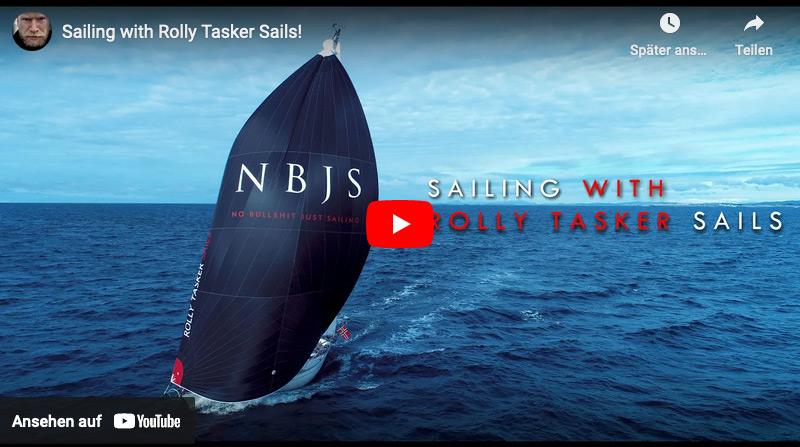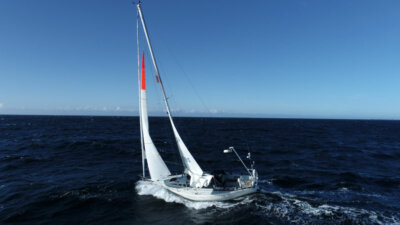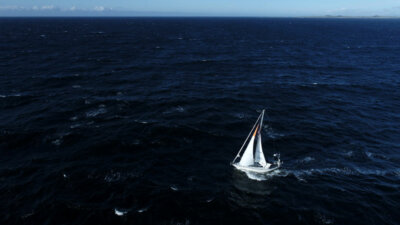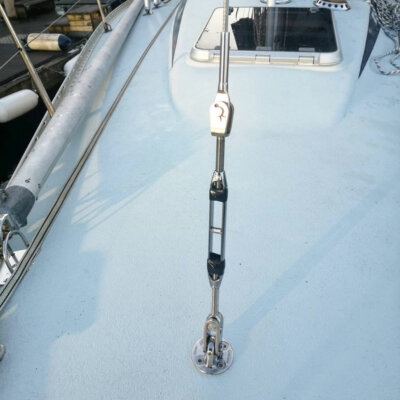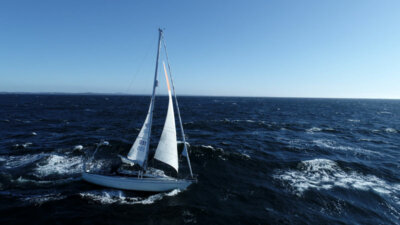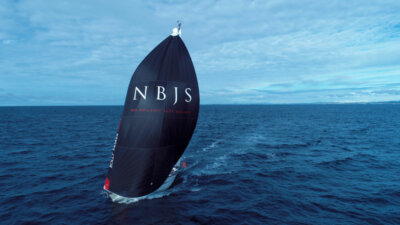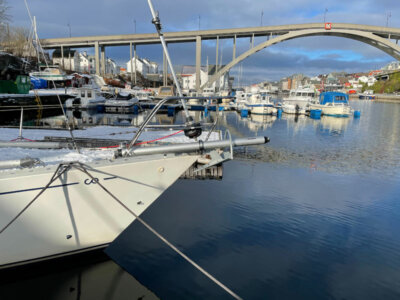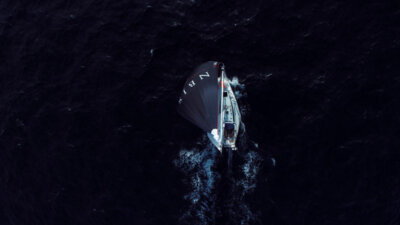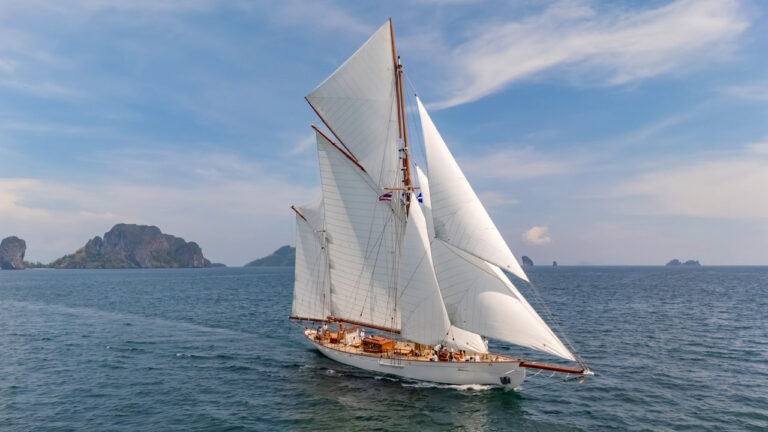In this video, you can see how Norwegian yachtsman Erik Aanderaa tries out his new sails by Rolly Tasker Sails, made for pursuing his love of rather extreme ocean sailing. Definitely important was a small jib, to be used in stronger winds instead of the partly furled Genoa which then has such a bad shape. This video nicely shows how to fit a removable inner forestay and a retractable spinnaker pole to a traditional masthead sloop rig.
New Staysail on a Detachable Cutter Stay
Erik’s boat is a typical 1980s cruiser-racer (Contessa 35) which has a masthead rig with a rather large Genoa. This type actually evolved from the successful One-Ton Class racing yacht “Gumboots” which was designed by Doug Peterson. Not a typical cruising yacht, in other words, but quite pretty, really fast and very well-built by Jeremy Rogers in the UK.
For Erik’s type of sailing, it definitely needed a small heavy weather jib. The partly furled Genoa was a bad solution, developing a shape – as Erik puts it – rather like an old bag when part-furled in heavy weather. Now the new staysail, set on a detachable inner forestay, is ideal.
Fitting the Inner Stay
This was not an easy job, as the boat has originally not been designed for a cutter rig. Erik shows in the video very clearly how he has done it. The stay needs a strong point on deck and of course another one on the mast. For the lower fitting, Erik has reinforced the deck from underneath with a chain on two turnbuckles that takes the pulling forces from the deck attachment and transfers these to a solid bow stringer deep down in the boat.
As for the mast, rigging the inner stay had to be a compromise. The original rig is set up as a single-spreader masthead rig. For a cutter stay, it would need to have a jump-strut or running backstays or both to support the stay at the mast. As it is, Erik has chosen to attach the stay to a point only about 1.5 meters below the masthead so that he does not need any extra rigging.
Erik also found a simple and clever solution how to make it easily detachable at the deck strongpoint. It is fitted with a turnbuckle, or rigging screw. Loosen this a bit by hand, then undo the protective covering for the bolts holding it – which are, in this case, not made of tape but Velcro strips, easily taken off and replaced. The “dropnose” bolts are secured by permanently fixed pins that just drop down to secure the bolt. To take out the bolt, these pins can simply be flipped into a position which lets the bolt slide out.
The New Staysail
The staysail made by Rolly Tasker Sails is the ideal sail for stronger and heavy winds. It is made of heavy-duty cloth to our demanding Offshore Cruising specification and even has a single reef line, making it even more versatile. Erik shows in the video how easily it can be reefed. Now, he has the perfect sail set-up for when the wind pipes up: Furl away the Genoa and set the staysail. This has the added advantage of not only having a much better profile than any partly furled sail and being much more effective, but also moving the sail-plan and the pressure more towards the boat’s center. In this way, the boat sails more easily, and the steering is also much lighter, reducing the workload for the autopilot or wind-vane.
The A5 Spinnaker
For the other end of the wind spectrum, but not only for light winds, is Erik’s new A5 asymmetric Spinnaker. Custom made for him by Rolly Tasker Sails in a cool black design with Erik’s motto NBJS – “No Bullshit Just Sailing” in huge letters across the middle. Previously, Erik did not have any specific downwind sails so again, he had to add some fittings for this new sail to his boat.
Retractable Gennaker Bowsprit
In this case, he had to fit a short, retractable Selden gennaker bowsprit for the tack of the A5 spinnaker. Again, Erik shows a very easy, step-by-step guide of how to fit this in his video, including how to feed the internal tack-line through the bowsprit. The Selden Bowsprit is basically held in place by a ring fitting which is welded to the bow fitting plus a fixed point a little further aft on deck into which the pole will be clipped when in use.
Fantastic Sailing
Already on his first few sea-trials with these new sails, Erik has obviously been delighted. The Asymmetric Spinnaker is set with a sock in the wind-shadow of the mainsail. Once set, a slight change of wind-angle by luffing up a few degrees will fill the sail – and off you go! These sails will undoubtedly add a new dimension to Erik’s already exciting sailing. So, we can really look forward to many more of his fantastic videos of sailing the Northern Ocean. First, do enjoy this one!
